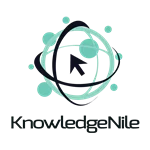Introduction to Headless Content Management System
It becomes a headless content management system when you separate your content repository's "body" from its presentation layer's "head." The frontend, which is referred to as the "head," is completely decoupled from the headless content management system. The backend, also known as the "body," is your content repository and content management system.
What distinguishes a headless CMS from a traditional CMS is its content-first approach. This also includes full APIs for accessing and displaying content in any way.
A headless CMS allows you to author content via a RESTful API and also deliver it to any location you need it.
Because a headless CMS does not generate any frontend code, it is also sometimes referred to as "Content-as-a-Service" (CaaS).
For end-users of a particular device, this process yields the best available digital experience. Frontend developers can also continue to develop new functionality for any channel.
3 Types of Headless Content Management System
Headless CMS architectures can be divided into three categories. The benefits of these architectures are as follows,
On-Premise Headless CMS:
Install-based architecture means you install the platform and host it on your own server.
This also means you'll have to handle everything from start to finish. Also, you have to pay for a maintenance package from your provider to cover platform updates.
Cloud Install Headless CMS:
This architecture is like install-based architecture, except that your provider installs the platform in their cloud. You usually pay your provider for hosting, management, and upgrades. These may be extra or included depending on the terms and conditions of your provider.
This can become complicated if you have many versions of your platform, especially if you are updating and fixing it. Also, if you're updating multiple sites with this method, you'll fall behind on platform versioning.
Cloud Multi-Tenant Headless CMS:
This means that your CMS is fully managed and upgraded for you on a regular basis. It is also highly advisable to use this architecture because of its ease of upgrade.
- Who Uses a Headless Content Management System?
- Advantages of Headless Content Management System
- Headless CMS is fast, easy, and flexible to develop
- The Headless CMS can be evergreen
- Headless CMS supports Omnichannel architectures
- It is less expensive to use a headless CMS
- The scalability of a headless CMS is greater
- It's simpler to learn and use a headless CMS
- Headless CMS is always up to date
- Headless CMS needs a smaller, less specialized team
- A Headless CMS helps to focus on the business
- Headless CMS leads to better software architecture
- Best Headless Content Management System
Who Uses a Headless Content Management System?
Many industries and verticals have embraced the headless CMS. They also use it as a central platform to power their entire digital experience across all devices and platforms. Companies can also connect with customers at scale, respond quickly to emerging market opportunities. They can also streamline content operations to ensure consistency while remaining agile by using a headless CMS.
The following are some of the industries that use a headless CMS.
Sporting Groups
Sports teams can create an omnichannel fan engagement platform using a headless CMS. Teams can help fans feel more connected to the players they care about by combining content with personalized data.
Airlines
Air carriers are subjected to some of the most difficult content requirements in any industry. Their teams handle critical, real-time communications, global content translation, and localization. They are also responsible for omnichannel presence that spans hundreds of customer touchpoints. Moreover, a headless CMS enables clear, consistent, and simplified communications. The services of headless CMS are accurate and up to date across owned web properties. These properties also include mobile apps, email, third-party search sites, and physical displays.
Services in the Financial Sector
Customers in the financial services industry rely on real-time content. It helps them make some of their most critical life decisions. They also expect personalized content to assist them in navigating complex processes and making informed financial decisions. Moreover, firms must be able to innovate while maintaining a solid, dependable foundation for content management.
Online Retailers
Customer experience is king in online retail. Customers are also quick to criticize brands that don't meet their needs. Headless CMS enables online retailers to create 1:1 customer connections. This can be done by tying marketing and product content to customer purchase history and other data. This also delivers a personalized shopping experience at scale.
Advantages of Headless Content Management System
Headless CMS is fast, easy, and flexible to develop
You can choose your programming language, and a headless CMS is API-driven. It allows you to build your “head” (presentation layer/frontend) from start to finish. The developers can also develop with ease without any proprietary development constraints. A singular content can be reused and combined with many presentation outputs. This also allows for faster project completion. An HTTP callback that triggers action-specific events is known as a webhook. Moreover, any of your existing systems can integrate with a headless CMS.
The Headless CMS can be evergreen
A headless CMS future-proofs your application. It enables you to structure your content to make future-proofing new projects easier. It also helps in rebranding one or more channels with no technical changes required within the CMS. The headless CMS approach is used by developers in their existing processes.
Headless CMS supports Omnichannel architectures
Omnichannel marketing can be a difficult task for marketers. Moreover, a headless CMS allows you to orchestrate a unified experience that is consistent and relevant across all touchpoints. The huge amount of digital touchpoints and languages that marketers must update in such a short period of time exacerbates these challenges. In conclusion, a headless CMS eliminates these common roadblocks.
It is less expensive to use a headless CMS
Business teams can create new functionality much faster with a headless CMS. Also, headless CMS requires little technical involvement. If a marketing department wants to create a new series of product mini-sites, they can go straight into the CMS and start creating. They don't need to wait for developers to build CMS-based templates. The upfront costs are also reduced because you can start with smaller solutions and work your way up.
The scalability of a headless CMS is greater
The back-end and front-end are separated. This helps if the back-end CMS platform experiences any performance issues. The website will not experience any downtime or suffer performance degradation. Moreover, with a headless CMS and deployment environment, your hosting options are limitless.
It's simpler to learn and use a headless CMS
The most obvious advantage of a headless CMS is how simple and quick it is to manage your content. The CMS implementation is cleaner. This means that the CMS tool is only used to store content and isn't cluttered with irrelevant info to business users or other resources.
Headless CMS is always up to date
The fact that a true, headless, multi-tenant system is fully managed and upgraded for you is a huge benefit. This is a huge benefit. Also, upgrading can be a very expensive project.
Headless CMS needs a smaller, less specialized team
Large teams of specialists knowledgeable in a particular CMS are no longer required. Sure, you need to have some knowledge, but not to the extent that a traditional CMS requires.
A Headless CMS helps to focus on the business
Worrying about your CMS all the time can divert your attention away from growing your business. A traditional CMS can eat up a lot of your time and money. Headless CMS lets you focus on your business.
Headless CMS leads to better software architecture
A headless CMS has a more efficient software architecture. Also, a headless CMS is usually designed to keep the CMS platform and the content separate. There are many advantages to this, including:
- Security: Restructured internal access to the CMS. Content published outside the organization is either approved for public consumption or secured/encrypted as needed.
- Scalability: Do you need to add more servers to meet the demand for a specific application? Create a new app server and point it to the content.
- Availability: If the CMS application goes down, the web applications are not affected.
Best Headless Content Management System
Magnolia
Magnolia is the ideal system for fast-paced publishing environments. It provides unmatched speed for both developers and authors. Developers can also use whatever front-end framework they want to create sites and apps. Moreover, marketers can work in parallel with a full authoring experience with live preview and personalization.
Contentful
Contentful is the most popular headless CMS according to G2. It has the largest ecosystem of partners, making integration from innovation easier. It's a one-stop shop for enterprise newsrooms. It also has a dependable infrastructure, high security, and good customer support.
Agility CMS
Agility CMS has been serving publishers for 15 years. It is a CMS designed for both editors and developers. Also, it combines the speed and flexibility of a headless platform with authoring features that editors are familiar with. Moreover, it is easy to use and set up and takes a content-first approach to structure and delivering digital content.
Superdesk
Superdesk is an end-to-end news creation, production, curation, and distribution platform. It combines headless CMS functionality with powerful workflow features. It also has a modular, API-centric design. This feature allows news organizations to add and adapt the functionality that is most relevant to their business.
Kentico Kontent
Kontent is a content management system that allows you to take control of your content, processes, and security. It also provides SLA-guaranteed uptime as well as round-the-clock support. Moreover, it organizes the content in Collections and makes it clear what everyone's responsibilities are. Kontent is also GDPR compliant and has Multifactor Authentication.
Strapi
Strapi provides a seamless multi-device experience with a user-friendly interface for managing content. It is also a one-stop solution for editors, product managers, developers, and business leaders. Moreover, it solves the key challenges of all functions of a media company.
GraphCMS
The editorial and development teams have complete independence with GraphCMS. It is a GraphQL native Headless CMS. While it is similar to other CMSs in terms of editorial features, it also seamlessly integrates with all frameworks. These frameworks include React, Gatsby, and Vue, making it ideal for developers.
Bold
Quintype's new-age digital publishing platform has created Bold, an enterprise headless CMS. It offers omnichannel distribution, a well-organized workspace, and a robust editing environment. Moreover, Bold provides in-depth analytics and machine-learning algorithms. This also ensures that the right content reaches the right audience.
Directus
Directus is an open-source platform that wraps custom SQL databases in a dynamic API. It offers a user-friendly admin app for content management. Its API also replicates the database schema, giving the users complete control over architecture and optimizations.
ContentStack
ContentStack improves the delivery speed of digital content, websites, and apps. It features omnichannel distribution and powerful integrations. These make it simple to connect a content management system to a technology ecosystem. It has a flexible UI/UX that encourages smart and effortless collaboration across the editorial team.
Conclusion
If you don't want to be tied to a specific tech stack, pre-defined templates, and themes and need additional functionality such as the ability to push content to multiple platforms, a Headless CMS is worth considering.
The way of content consumption on the internet has prompted the development of headless CMSs. Web pages used to deliver content to browsers for a long time. But, today, we have many interfaces on which the content needs displaying. As a result, a headless CMS was born.
The Headless CMSs listed above appear promising. But, before choosing a CMS platform, one must go through their needs and compare the features of the above-listed CMSs.





